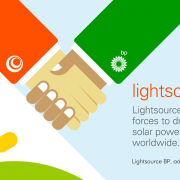Promising applications of Quantum Dots for Solar Energy
Researchers from around the world gathered last week in Santa Fe, New Mexico to reflect on two decades of quantum dot research at a special topical conference, “20 Years of Quantum Dots at Los Alamos.” The conference is hosted by the New Mexico Consortium and its program committee includes several past and present members of the Nanotechnology and Advanced Spectroscopy Team (NanoTech team) of the Chemistry Division of Los Alamos National Laboratory lead by Victor I. Klimov.
Quantum Dots
Quantum dots are ultra-small bits of semiconductor matter that can be synthesized with nearly atomic precision via modern methods of colloidal chemistry. Their emission color can be tuned by simply varying their dimensions. Color tunability is combined with high emission efficiencies approaching 100 percent. These properties have recently become the basis of a new technology – quantum dot displays – employed, for example, in the newest generation of e-readers and video monitors.
Applications of Quantum Dots for Solar Energy

Core/shell PbSe/CdSe quantum dots (a) and a carrier multiplication (CM) pathway (b) in these nano structures. (a) Transmission electron microscopy image of thick-shell PbSe/CdSe quantum dots developed for this study. (b) A hot hole generated in the shell via absorption of a photon collides with a core-localized valence-band electron, promoting it across the energy-gap, which generates a second electron-hole pair. In thick-shell PbSe/CdSe quantum dots this process is enhanced due to slow relaxation of shell-localized holes into the core.
An important breakthrough reported by the NanoTech team is a discovery of carrier multiplication in quantum dots, the process whereby absorption of a single photon produces multiple electron-hole pairs. Potentially, it can boost the efficiency of solar-energy conversion in both photovoltaics and generation of solar fuels. The pioneering work of the Los Alamos team transformed carrier multiplication from a theoretical concept for exceeding fundamental limits in solar-energy conversion into a technological reality.

This schematic shows how the quantum dots are embedded in the plastic matrix and capture sunlight to improve solar panel efficiency.
Another possible application of quantum dot technology is a house window that doubles as a solar panel, thanks to recent quantum-dot work by Los Alamos National Laboratory researchers in collaboration with scientists from University of Milano-Bicocca (UNIMIB), Italy. Their project demonstrates that superior light-emitting properties of quantum dots can be applied in solar energy by helping more efficiently harvest sunlight.
Center for Advanced Solar Photophysics
Capitalizing on advances in understanding of how nanoparticles interact with light, the Los Alamos quantum dot team in 2008 developed a proposal that led to establishment of the Center for Advanced Solar Phototophysics, (CASP) led by Klimov, and funded in 2009 by the U.S. Department of Energy as part of the nationwide initiative in Energy Frontier Research Centers. The mission of CASP is to harness the unique properties of quantum-confined semiconductor materials for facilitating the realization of the next generation of low-cost, high-efficiency solar photoconversion systems.
Lead researcher Victor Klimov of the Center for Advanced Solar Photophysics (CASP) at Los Alamos, said:
“We need more efficient solar cells and we need them to be less expensive and Quantum Dots is a perfect materials platform for the realization of inexpensive solar cells and also efficient solar cells and interestingly, not only, Quantum Dots allow you to think about solar paints, for example, they can provide efficiencies which would surpass the efficiencies of traditional silicon photovoltaic devices.”
Source: Press Release by Los Alamos National Laboratory. Image Credit: CC via Flickr. Video Credit: Los Alamos National Laboratory via YouTube.









